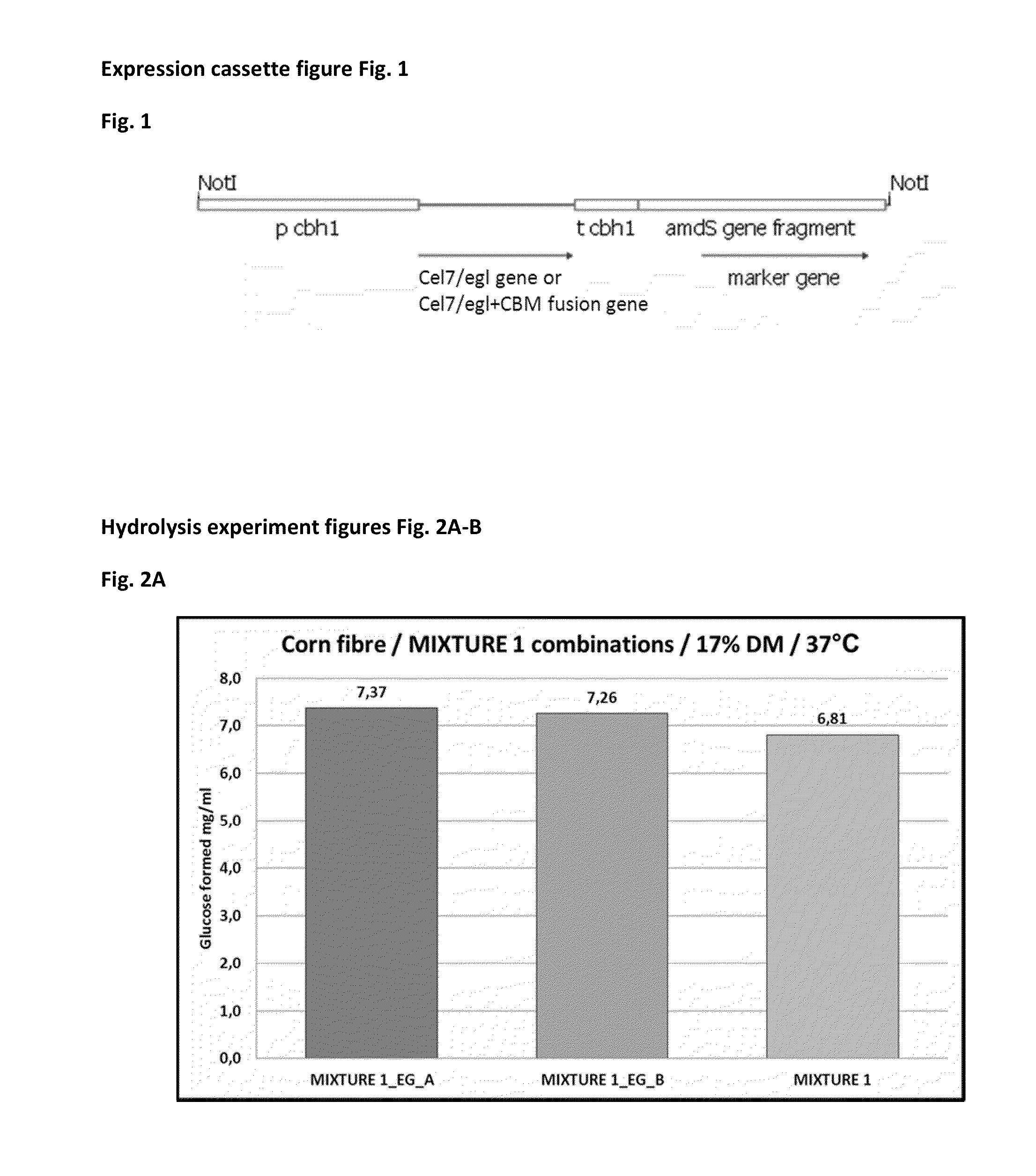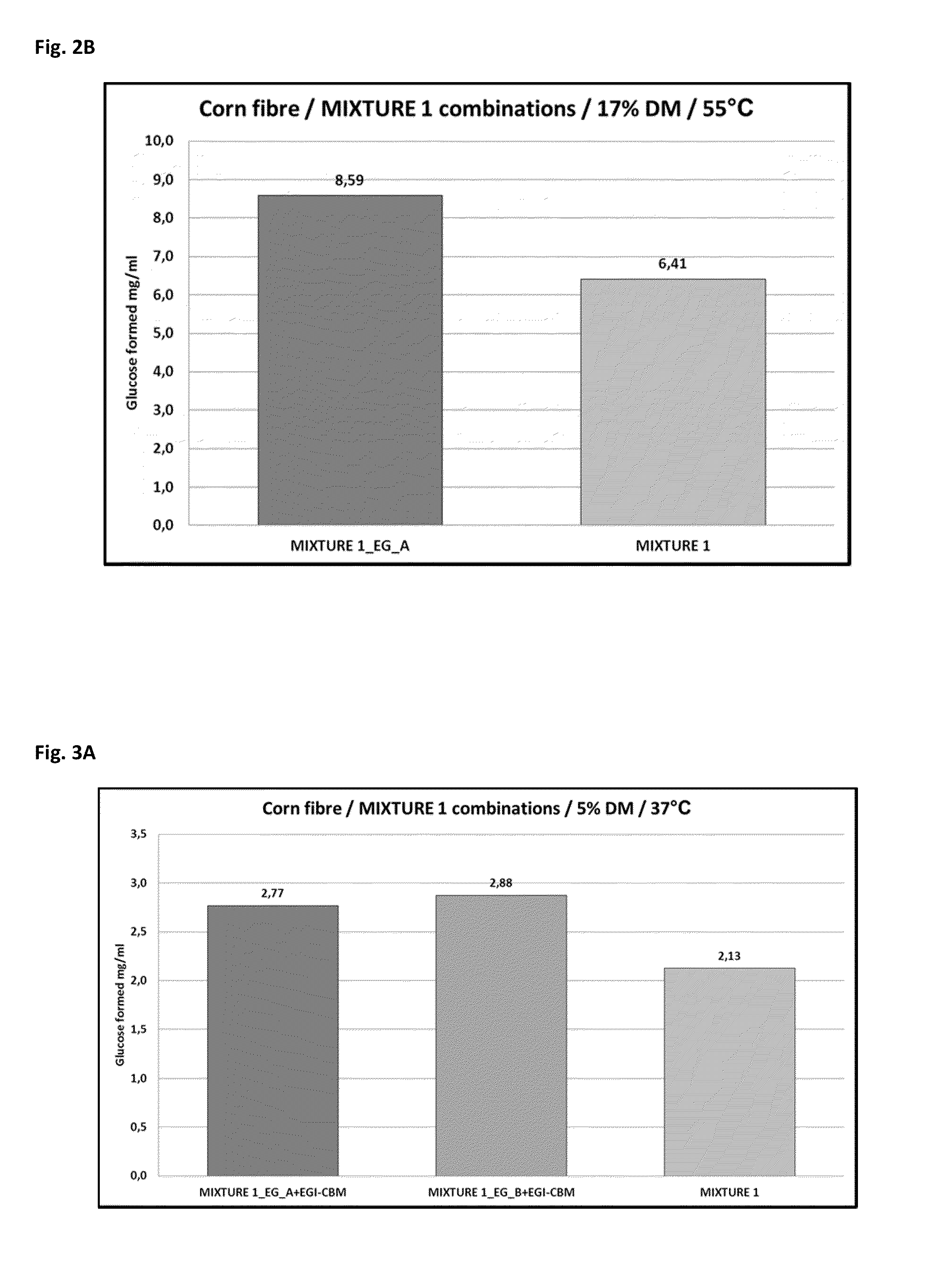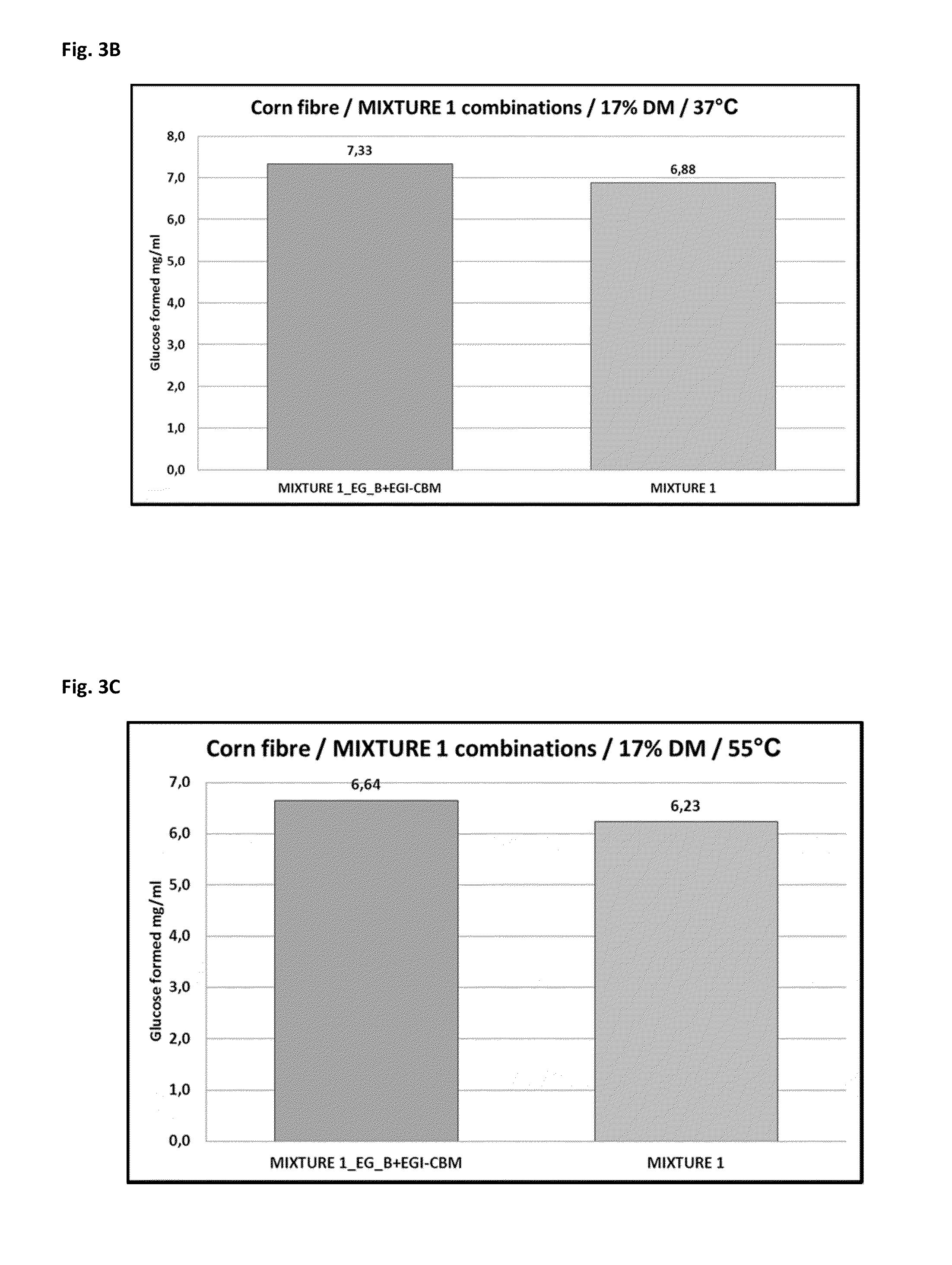Endoglucanases for Treatment of Cellulosic Material
a cellulosic material and endoglucanase technology, applied in textiles, paper after-treatment, enzymology, etc., can solve the problems of increasing the risk of contamination, increasing the cost of enzymatic step, and insatiable technology, so as to improve the activity and the effect of hydrolysis and degrading cellulosic material, high activity and high reaction ra
- Summary
- Abstract
- Description
- Claims
- Application Information
AI Technical Summary
Benefits of technology
Problems solved by technology
Method used
Image
Examples
example 1
Cloning of the Endoglucanase (Cel7 / egl) Genes
[0119]Standard molecular biology methods were used in the isolation and enzyme treatments of DNA (e.g. isolation of plasmid DNA, digestion of DNA to produce DNA fragments), in E. coli transformations, sequencing etc. The basic methods used were either as described by the enzyme, reagent or kit manufacturer or as described in the standard molecular biology handbook, e.g. Sambrook and Russell (2001). Isolation of genomic DNA was performed as described in detail by Raeder and Broda (1985).
[0120]After screening of several strains from Roal Oy culture collection one thermophilic fungal strain was selected for cloning. The probes for cloning the cel7 / egl genes (egl_A and egl_B) from Acremonium thermophilum ALKO4245 were synthesized by PCR. Degenerate oligos were planned basing on the alignment of the previously published amino acid sequences of GH family 7 endoglucanase (EGI) proteins. The sequences of the primers are shown in Table 3 (SEQ ID N...
example 2
Production of Recombinant EG / Cel7 Proteins in Trichoderma reesei
[0127]Expression plasmids were constructed for production of recombinant EG / Cel7 (EG_A and EG_B) proteins from Acremonium thermophilum ALKO4245 in Trichoderma reesei. The expression plasmids constructed are listed in Table 8. The recombinant cel7 / egl genes (egl_A and egl_B), including their own signal sequences, were fused to the T. reesei cel7A / cbh1 promoter by PCR. The transcription termination was ensured by the T. reesei cel7A / cbh1 terminator and the A. nidulans amdS marker gene was used for selection of the transformants as described in Paloheimo et al. (2003). The linear expression cassettes (FIG. 1) were isolated from the vector backbones after NotI digestions and were transformed into T. reesei protoplasts. The host strain used does not produce any of the four major T. reesei cellulases (CBHI, CBHII, EGI, EGII). The transformations were performed as in Penttilä et al. (1987) with the modifications described in ...
example 3
Production of the Recombinant Acremonium thermophilum ALKO4245 EG+Trichoderma reesei CBM Fusion Proteins in T. reesei
[0130]The atypical linker and CBM regions of Acremonium thermophilum ALKO4245 EG / Cel7_A (EG_A) were removed and the core region of the protein was fused to linker and CBM of Trichoderma reesei EGI / Cel7B (=EGI-CBM). Acremonium thermophilum ALKO4245 EG_B was also fused to linker and CBM of Trichoderma reesei EGI / Cel7B. For that purpose, the coding sequence of the core regions of EG_A and EG_B and the coding sequence of the linker and the CBM of Trichoderma reesei EGI / Cel7B were synthesized by PCR using following primers:
SEQ ID NO: 9 (forward sequence for EG_A core primer)
SEQ ID NO: 10 (reverse sequence for EG_A core primer)
SEQ ID NO: 11 (forward sequence of EGI-CBM primer)
SEQ ID NO: 12 (reverse sequence of EGI-CBM primer)
SEQ ID NO: 13 (forward sequence of EG_B primer)
SEQ ID NO: 14 (reverse sequence of EG_B primer)
SEQ ID NO: 15 (forward sequence of EGI-CBM primer)
SEQ ID...
PUM
| Property | Measurement | Unit |
|---|---|---|
| temperature | aaaaa | aaaaa |
| temperature | aaaaa | aaaaa |
| temperature | aaaaa | aaaaa |
Abstract
Description
Claims
Application Information
 Login to View More
Login to View More - R&D
- Intellectual Property
- Life Sciences
- Materials
- Tech Scout
- Unparalleled Data Quality
- Higher Quality Content
- 60% Fewer Hallucinations
Browse by: Latest US Patents, China's latest patents, Technical Efficacy Thesaurus, Application Domain, Technology Topic, Popular Technical Reports.
© 2025 PatSnap. All rights reserved.Legal|Privacy policy|Modern Slavery Act Transparency Statement|Sitemap|About US| Contact US: help@patsnap.com



